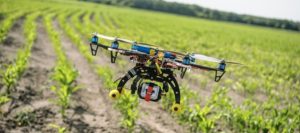
The world’s food system sits at a precarious intersection. Rising temperatures and erratic rainfall, political instability and conflict throughout the developing world, and rapid movement of people to urban hotspots are just some of the global trends threatening global agricultural production today. Experts predict the global population will increase to 9.7 billion people by 2050, greatly increasing the demand for food and pressure on an already constrained global food supply.
At the same time, biological advancement has enabled the production of genetically engineered crops resistant to pests and droughts, promising future resilience from climate change. And governments around the world have committed to increasing agricultural production through legislation and agricultural investment plans.
Today, scientists, agricultural experts, government officials, and farmers are preoccupied with tackling one of the biggest questions: how can we maximize global agricultural production to feed a growing world?
Solutions to this problem were presented at the ICT4Ag conference in Washington, DC where technology geeks and agricultural experts had some truly innovative answers: mobile phone apps, Uber for tractors, and drones. Yep, you read that right: the same technology used in military strikes and modern warfare is being applied to Rwanda’s maize fields and Benin’s cashew farms.
At first it might be difficult to make the connection between drones and agriculture. Established 12,000 years ago, agriculture is literally one of the oldest practices of humankind. Drones, on the other hand, emerged only in the last century, with commercial drones gaining popularity over the past ten years. Growing food requires basics inputs – good soil, water, and the sun. Drone technology draws from new advancements like remote sensing, high-optic cameras, and gyro-stabilization (the technology behind how drones are able to smoothly fly through the air).
However, agriculture and drones are not as distinct as one might think. Rather, the two concepts are important complements to each other. With strained natural resources and a growing global population, we can no longer afford for agriculture to be a practice of the past. Could drones be a missing piece in the global yield gap puzzle by maximizing effective agricultural practices and empowering farmers?
The Perks of Drones in the Sky
Drones have the potential to transform the ways smallholder and low-resourced farmers in developing countries make key decisions with better data.
Drones can pinpoint areas where crops are damaged faster and more efficiently than a farmer or extension agent could do through field monitoring or random sampling. Farmers are able to identify areas of concern earlier and more accurately, which in turn increases the likelihood of success from efforts like additional fertilizer or pesticides. Identifying problem areas in a field early is critical in ensuring a good crop yield.
Drones can help farmers save significant costs by targeting an intervention on areas that need it most. Instead of applying pesticides or fertilizer to an entire field, farmers can reduce costs (and health risks) by focusing on one problematic part. Farmers also save money by knowing exactly where they should plant certain crops in their field. Differences in slope or soil quality even within a field can produce different yields, so farmers can maximize their investment by planting more effectively. Some estimates find drones can reduce planting costs by 85 percent.
What’s even more effective is that when layered with weather and climatic information, drones can help low resourced farmers anticipate rainy or dry periods and make better decisions regarding pesticides, watering, and fertilizer use. Not only is that great for the pocketbook but also for the environment.
Drones can also help farmers secure land rights over their fields, by providing clear images of field boundaries. This benefit is especially important for female farmers who face a higher risk of land grabbing by male family members or the community.
Drones help empower smallholder farmers with more information about their fields. When farmers can see the images and maps captured from drones, they gain a new perspective of their livelihoods. Farmers gain power when they have more information and can make more informed decisions.
Current Challenges
Using drones to increase agricultural productivity for low resourced farmers is not without its challenges.
One challenge is, unsurprisingly, cost. Although the price has decreased substantially over the past few years, drone services still prove prohibitively expensive for most smallholder farmers in developing countries to afford. In some emerging economies, medium to large scale farmers are currently helping facilitate demand for drone services. Elsewhere, groups of smallholder firms are banding together to create aggregate demand for these services.
Government drone regulations can also restrict the use of drones for agricultural purposes. Approximately 77% of African countries lack drone regulations. This can make it very difficult for organizations promoting drone use in agriculture.
Progress Towards a Drone-Friendly Future in Agriculture
So what does a world with drones look like? Turns out, we already have a pretty good idea. The agricultural drone market is expected to reach $3.7 billion by 2024 as governmental policies become more favorable and services expand.
Development organizations like We Robotics and RTI International currently provide drone services to low resourced farmers around the world. Investors are already taking notice of drone entrepreneurs like Ranveer Chandra, a former Microsoft researcher, who is developing a system using drones and soil sensors to improve soil quality of smallholder farmers. And attention is also focusing on startups like Kenya’s SunCulture, an agro-solar organization that sells drip irrigation systems and uses drones to determine the placement of their systems.
A future of drones and shrinking yield gaps in agricultural fields around the world is on the horizon. Now we just need to ensure that these services are accessible and affordable for the smallholder farmer to use.
Emily Johnson is a second year Masters of Public Policy candidate studying agriculture policy and international development.


